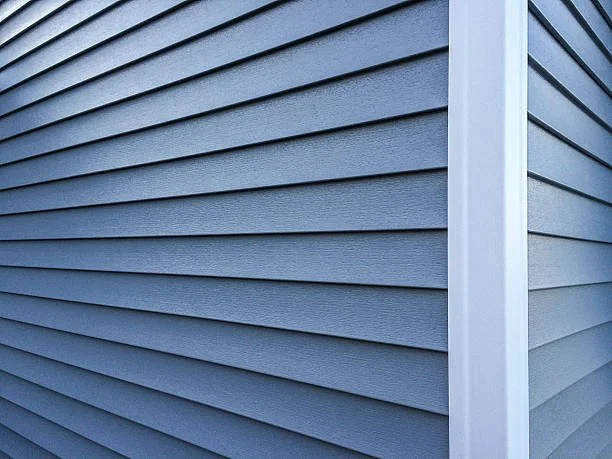Siding plays a big role in how your home looks—and how well it holds up over time. It’s not just about curb appeal (although that’s definitely part of it). The right siding can improve energy efficiency, protect against harsh weather, and reduce the amount of maintenance you need to do year after year. So how do you choose the right one?
Start With the Big Picture
Before you start looking at colors or textures, step back and consider what your home actually needs. Think about:
Your climate
Is your area humid, rainy, hot, cold, or a mix of everything? Some siding materials perform better than others depending on the weather.
Your home’s architecture
Modern, colonial, ranch, craftsman… different styles suit different siding types. You want something that complements the overall aesthetic.
Your budget
Prices vary a lot depending on the material, how much labor is involved, and whether additional work (like replacing insulation or sheathing) is needed.
Once you’ve got those basics in mind, then it’s time to look more closely at your options.
Think Long-Term: Maintenance Really Matters
Maintenance isn’t the most exciting part of choosing siding—but it’s one of the most important. Some materials practically take care of themselves, while others need regular attention to stay looking good and performing well. Be honest with yourself: are you willing to pressure-wash or paint every few years? Or do you want low maintenance siding options? Here’s what to consider when it comes to upkeep:
● Paint or stain needs – Some siding has to be repainted or re-stained regularly. That’s not just time—it’s money, too.
● Cleaning routine – Will it need annual washing to avoid buildup? Is it prone to mold or mildew?
● Durability – How does it hold up to weather, pests, and wear and tear over time?
If low-maintenance is a priority, there are options out there that only need a quick rinse once or twice a year. That alone can save you hours (and dollars) down the road.
Weigh the Pros and Cons of Common Siding Materials
Each type of siding has its strengths—and its trade-offs. Here’s a quick breakdown to help you compare:
Vinyl
● Pros – Affordable, low-maintenance, tons of colors and styles
● Cons – Can crack in very cold weather, not as durable under impact
Wood
● Pros – Natural look, classic appeal, can be painted or stained
● Cons – High maintenance, vulnerable to rot, termites, and fire
Fiber Cement
● Pros – Durable, fire-resistant, low maintenance, mimics wood
● Cons – Heavier (which can increase installation costs), limited flexibility
Metal
● Pros – Fire-resistant, recyclable, sleek modern look
● Cons – Can dent, may fade or rust over time in certain climates
Engineered Wood
● Pros – Looks like real wood, more durable, lower maintenance
● Cons – Still needs occasional upkeep, not as time-tested as other materials
Again, your climate, aesthetic preferences, and maintenance tolerance will help narrow this down. For example, fiber cement tends to be a favorite in areas with high humidity or wildfire risk. In contrast, vinyl often wins in terms of price and ease of care.
Don’t Overlook Insulation and Energy Efficiency
Siding doesn’t just sit on your walls to look pretty—it also plays a role in how well your home holds heat (or keeps it out).
Some siding options come with built-in insulation, while others require adding a layer underneath. Either way, this can have a noticeable effect on your utility bills.
If you live somewhere with extreme temps—hot summers or freezing winters—look into insulated siding or ask about adding foam backing. It can make a real difference in comfort and efficiency.
Color Isn’t Just Cosmetic
Yes, the color of your siding affects your home’s curb appeal, but it also plays a role in practical areas.
Light vs. dark
Lighter shades reflect more sunlight and may keep your home cooler. Darker colors absorb more heat.
Fading over time
Some materials and colors fade faster than others. If you don’t want to repaint or replace panels later, go for a fade-resistant option.
Neighborhood fit
While you want your home to stand out (in a good way), it should also blend with the character of nearby houses. Some communities even have restrictions, so double-check if there are any rules before finalizing your decision.
What About Installation?
The best siding in the world won’t do much good if it’s poorly installed. A good installation helps prevent moisture issues, improves energy efficiency, and extends the lifespan of the material.
It’s worth investing in a skilled contractor who understands the specifics of the material you’ve chosen. Some siding types—like fiber cement or metal—require special tools and know-how, so don’t leave it to chance.
Future-Proof Your Choice
Think about where you’ll be in 5 or 10 years. Are you staying long-term? Planning to sell? Your answer might shift your priorities.
● If you’re staying – Choose what works for you. Think about maintenance, comfort, and style that you’ll still like years from now.
● If you’re selling – Go with something durable and attractive to a broad audience. Neutral colors, low maintenance, and energy-efficient features often appeal to buyers.
Make the Right Choice for Your Home
Siding isn’t something you replace often—so it’s worth taking the time to choose wisely.
Start with your climate and home style, be realistic about upkeep, and weigh your options based on what matters most to you. Whether your top priority is low maintenance, long-term value, or a particular look, there’s a siding option that checks the boxes.
And once it’s done? You’ll be glad you chose something that not only looks great but also works hard behind the scenes to protect your home.


